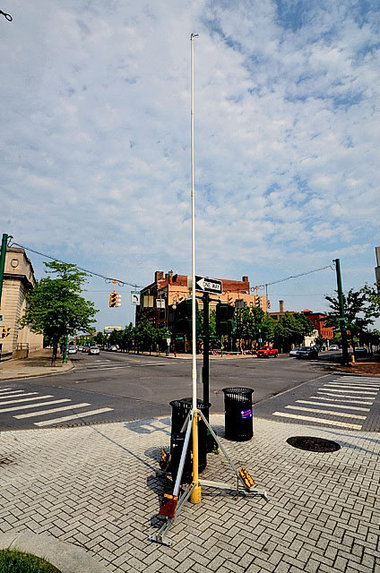There's a livable streets battle taking place in Milwaukee, Wisconsin. It's the same one that's been going on in Syracuse, New York and Cincinnati, Ohio.

All three of these Rust Belt cities are considering or undertaking conversions of one-way streets back to two-way traffic. The goal is to slow down motorists a little bit and create a more hospitable environment for pedestrians --- and, as a biproduct, for local businesses.
In these cities and others across America, one-way streets were a 60s-era innovation designed to increase car capacity in downtowns -- meant to funnel drivers as quickly as possible onto exit ramps and off to the suburbs. But as mid-sized cities across the Midwest see an increase in downtown living, there has been heightened awareness about the drawbacks of this arrangement for pedestrians.
"You essentially have a drag strip," Milwaukee Alderman Robert Bauman said of one of the city's four-lane, one-way arterials. "They are a constant source of complaints -- from residents across the street and visitors who choose to walk rather than drive."
The Alderman has been a leading advocate for a series of four conversions of one-way streets to two-way streets. His motivation? A more livable, less car-centric city.
Two-way streets "keep traffic speeds down," he said. "They’re more conducive to pedestrian activity. They’re more conducive to retail activities. In every aspect except traffic capacity, they’re more conducive to urban areas."
Bauman is hoping the city's Common Council will approve the conversions at their next meeting in a few weeks -- before their summer recess begins and before a related bridge project gets underway.
Some public education is required, however. All of downtown Milwaukee's business associations are strongly supportive of the proposal, he said. But some resistance has emerged from representatives of the city's convention center. Many of these individuals are powerful local political players. But Bauman said their arguments basically boil down to a fear of change. The only other organized opposition comes from parking lot owners downtown.
This resistance has made the latest round of conversions a source of "medium"-level controversy, said Bauman. A Journal-Sentinel editorial last week ran under the headline "Collision Likely Over Two-Way Traffic on Wells Street."
But, he said, resistance is waning because Milwaukee has been engaging in two-way conversions since the 1990s, with indisputable results. The conversions have been popular with residents and business owners alike.
"That’s the strongest argument we have," Bauman said. "All these arguments about how there’s going to be backups, pedestrian fatalities and all these other dire warnings, never materialized."
Two-way conversions may be a small step toward rethinking the hegemony of the automobile in the Midwest. But it represents an important seachange in how second-tier cities view transportation issues. And Milwaukee is not alone, in this respect.
In Cincinnati, Complete Streets advocates have called two-way street conversions priority number one. Syracuse, meanwhile, sees it as an important economic development strategy.
Paul Mercurio, a Syracuse transportation planner, is clear about the reason for the change.
“The one-way streets prioritize volumes of traffic," Mercurio told the Post-Standard. "Two-way streets prioritize people."
As for which camp Midwestern cities prioritize, that seems to be changing.





